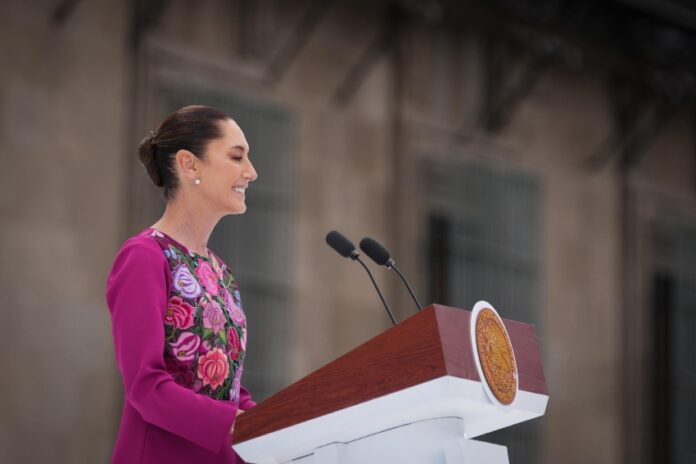As part of Mexico News Daily’s ongoing coverage of Claudia Sheinbaum’s first year in charge, we are highlighting a variety of personal perspectives and opinions from Mexico and beyond.
I did not vote for Sheinbaum. I cried on election night — not out of surprise, since her victory was expected — but as I watched Mexico’s map turn maroon and saw both the Senate and Chamber of Deputies change color in real time on television. A sinking feeling took hold: This was slipping out of control. I was furious with the opposition parties, with the nearly 60% of voters who handed her the win, and yes, I wondered whether my doubts about her as AMLO’s heir made me biased. Such is democracy.
I cried because I had sworn that Sheinbaum wouldn’t be able to preserve her independence from the now-former president. I cried because, in Mexico, elections rarely unfold without hints of corruption. Although, honestly, is anyone who wins entirely squeaky-clean? Probably not.
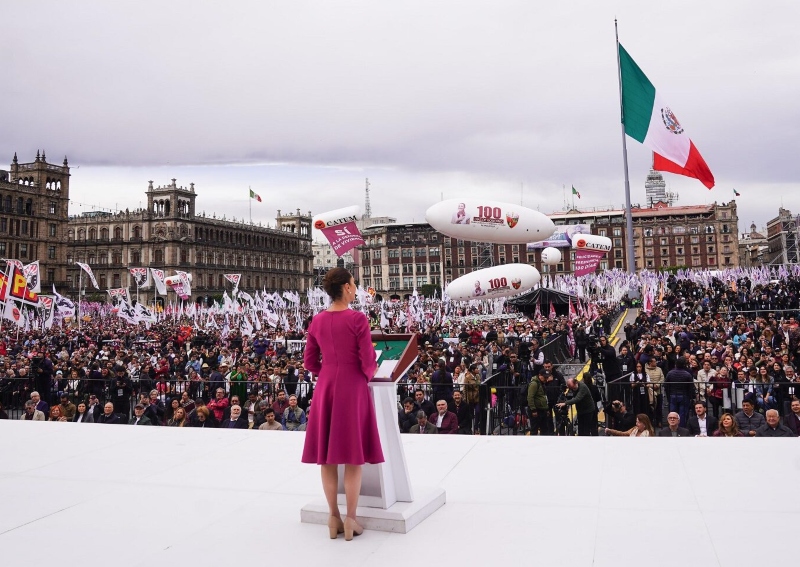
Today marks her first year in office. Beyond the initial frenzy of the first 100 days, we can now begin to assess her governorship and glimpse what the next five years might hold. Below, in seven points, I review the year’s highlights and setbacks. At the end of each section, I offer a personal reflection, hoping to spark debate.
1. Greater approval, less polarization
Sheinbaum is Mexico’s first female president, and her victory set a record thanks to a raw vote total unmatched in the country’s democratic history. Polling has been revealing: a Banamex report placed her approval rating above 70% — the highest for a comparable period among the last five presidents—and an Enkoll survey published in El País put it at roughly 79%.
Where is she strongest? Among women and notably young voters (18–29). States like Oaxaca, Tlaxcala, and Tamaulipas report approval levels near 80%. Meanwhile, Mexico City and Guanajuato remain in the low to mid-50s.
Whether it’s her more measured rhetoric, her governing style or the absence of near-constant tirades against “fifís” and rival ex-presidents, Sheinbaum seems to be knitting consensus rather than ripping it apart. Charming or tactical — take your pick.
In an informal poll of acquaintances, I’ve noticed less anger directed at her. More people seem willing to acknowledge her successes and shortcomings with an open mind. The reduction in polarization is real and encouraging and this allows policies to be judged with fewer distortions.
2. The Trump affair
Diplomacy matters. Sheinbaum and her cabinet members had shown up for meetings with their homework done and delivered results: large drug seizures, the extradition of more than 55 alleged traffickers (including high-profile figures linked to the CJNG and the Sinaloa Cartel) and a reported slowdown in migrant flows to the U.S. These moves have earned her unexpected praise. Trump himself called her “excellent and respectful.”
One issue worth noting: our tariffs compared to other countries. Mexico’s effective average tariff rate stands at 8.28%, one of the lowest worldwide. For now, 84% of Mexico–U.S. trade remains duty-free under USMCA exemptions.
However, we are currently under a pause — set to lift on October 29 — on a 30% tariff. Though most goods are protected by the USMCA, if Mexican authorities fail to meet U.S. demands, commodities like copper, heavy trucks, pharmaceuticals, kitchen cabinets and upholstered furniture could face tariffs of varying severity as soon as Oct. 14. If so, they would join steel and aluminum, which are already subject to tariffs.
Sheinbaum has successfully avoided the kind of American intervention that once seemed plausible. At the same time, there hasn’t been a mass exodus of multinationals, no immediate supermarket price shocks — and, on this narrow bilateral scorecard, she’s managing effectively.
But the real test lies ahead: the renegotiation of the USMCA. It’s already unofficially underway. Government officials have been negotiating in Washington for months. Threats to various treaty provisions are inevitable, but it will be her strategy — or rather her cool-headed negotiation skills — that determine whether Mexico emerges relatively unscathed.
3. Violence and security
Hard numbers tell part of the story: daily homicides fell from around 86.9 in September 2024 to roughly 64.9 in July 2025. That’s a 25.3% drop. Yet public fear of insecurity has grown. According to the National Urban Public Security Survey, those who feel unsafe rose from 59.4% to 63.2% over the same period. How do we reconcile fewer murders with heightened anxiety? Partly because the government shifted away from AMLO’s “abrazos, no balazos” approach. During her first 100 days, confrontations between criminal groups and authorities surged by nearly 97%, and deaths from these clashes increased by over 65%.
Some credit U.S. diplomatic pressure for the decrease in homicides. Regardless of the cause, President Sheinbaum and Security Secretary Omar García Harfuch have made clear their commitment to dismantling organized crime. Whether these declines will persist without more violence remains uncertain.
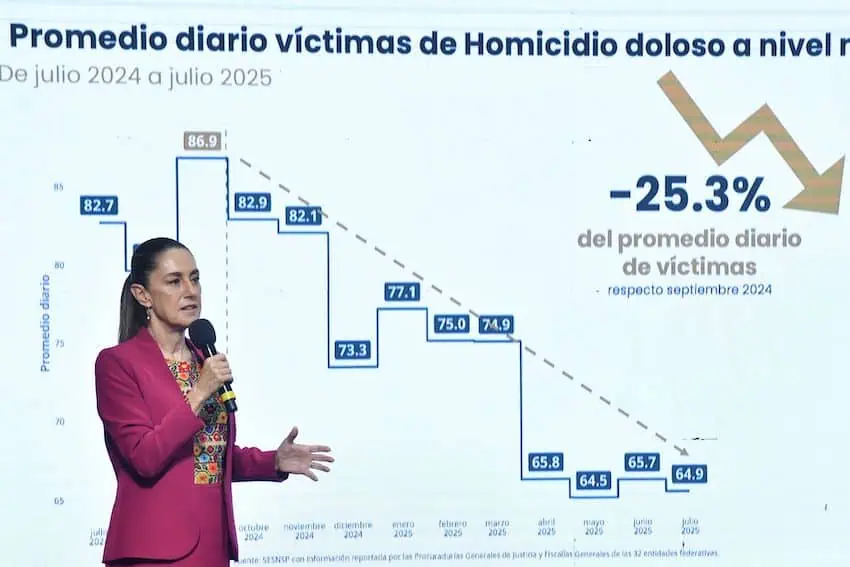
However, the Public Security Survey takes into account other crimes like kidnapping, robbery or extortion. For women, especially, there’s an added layer of anxiety about sexual violence. In everyday conversations, phrases like “let me know when you get home,” “avoid traveling at night,” “be careful at the ATM” and “don’t carry cash” feel like a subtle reminder that crime goes beyond cartel activities. While numbers offer hope, social perception and persistent fears show security remains fragile.
4. Judicial reform
I’ll admit: I’m no legal expert. But trusted voices agree on two points. First, comprehensive judicial reform was long overdue. Second, its rushed implementation has brought problems. The reform was necessary because many judges have historically engaged in corruption, received excessive payrolls and made political compromises. Yet, the changes have increased executive and legislative influence over judicial appointments, raising concerns about politicizing a judiciary traditionally staffed by career magistrates.
Now, as new magistrates settle in, issues emerge. Familiarity with procedures remains uneven, and perceptions of overreach persist. A telling example: reports once revealed that Supreme Court President Hugo Aguilar employed 84 advisers, costing roughly 6 million pesos monthly, until public uproar forced a 35% staff reduction. By contrast, former Chief Justice Norma Piña had just six advisers.
Will this reform reduce impunity or weaken judicial independence, undermining the rule of law? Only time and the rest of her term will tell. The reform addressed real problems, but its rushed rollout risks weakening judicial safeguards.
5. Internal rifts in Morena
Morena is far from monolithic. Ongoing investigations into alleged corruption networks have exposed fractures within its ranks. These probes reportedly implicate relatives of the former president and regional party figures, revealing the party’s internal vulnerabilities.
Within the presidency, one of Sheinbaum’s boldest moves against her internal opponents has been her proposal to eliminate proportional representation seats in both Legislative Chambers. In simple terms, she aims to diminish the influence of larger parties in the Deputy’s Chamber and the Senate. Another initiative targets nepotism in public appointments. It’s scheduled to take effect in 2030 and seeks to restrict direct family succession. Despite her good intentions, these measures do little to dismantle the extensive networks of family ties that have long permeated Mexican politics across parties and sectors.
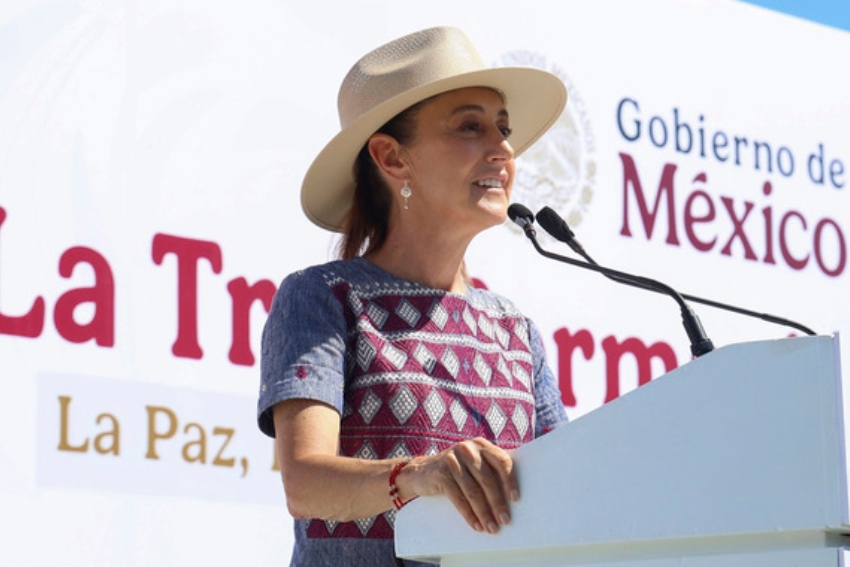
The party’s internal tensions confirm what many expected: a clear break from AMLO’s departure. But how Claudia has managed that rupture is surprising. Her apparent willingness to tolerate implicated figures or let them take political hits suggests a strategy — one that consolidates her power by allowing opponents to self-destruct, leaving lasting grievances within Morena.
6. Women in power
Compared with other countries, Mexico’s inclusion of women at the top has come late and rapidly. My sister, who has a PhD in gender politics, explained that “marianismo” — a paternalistic form of rhetoric from female leaders that seeks to empower women but often ends up being misogynistic — is a risk. Sheinbaum, with her professional demeanor and academic background, has consciously avoided that trap, unlike some other Latin American female presidents, like Michelle Bachelet in Chile or Cristina Fernández de Kirchner in Argentina.
Given Mexico’s high rates of femicide and violence against women, her calm, deliberate demeanor — often marked by symbolic acts like wearing purple or quietly observing the national celebration from her balcony — was a powerful image and felt like a moral victory. If a woman can hold the presidency, perhaps more will feel empowered to pursue public roles.
It’s still too early to tell whether her presidency will bring about transformative change, whether her mere presence can shift Mexico’s machismo culture. Watching her exercise power is impressive, but structural change for gender equality will require persistent policy and cultural shifts beyond representation.
7. Economy
You might have seen reports claiming Mexico is doing okay, and there’s truth in that. Sheinbaum has maintained economic stability. Inflation stands at 3.5%, within the Bank of Mexico’s projections, and GDP is forecast to grow by 1% this year, per the International Monetary Fund.
The so-called Plan Mexico — designed to attract foreign investment — is underway. While the country retains some advantages over competitors, challenges remain. The specter of Trump’s “Make America Great Again” agenda continues to undermine investor confidence.
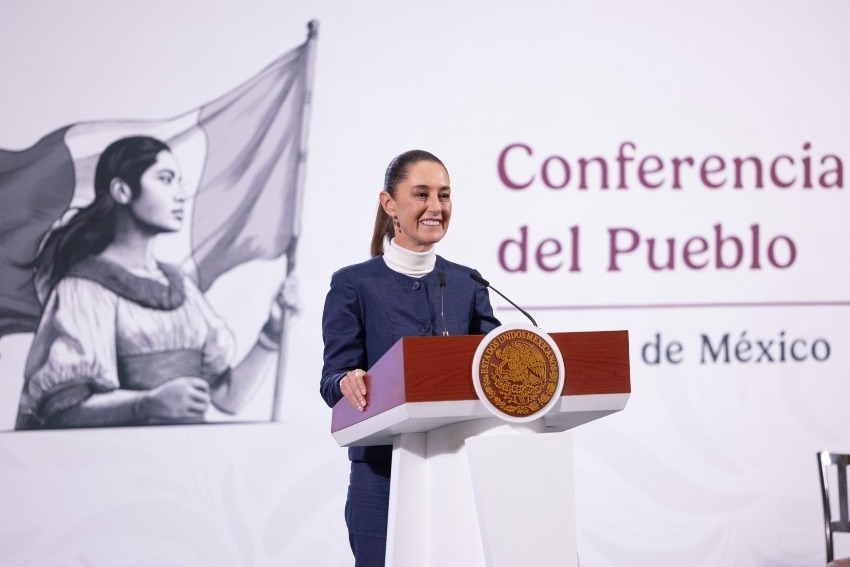
Most notably, inherited from AMLO, poverty has decreased considerably, and the minimum wage has risen by 135% in real terms.
There’s always a “but.” Mexico’s public debt now accounts for 60.7% of GDP. Pemex, the state oil company, carries one of the largest fiscal burdens, with debts approaching US $100 billion. Exploration activities have fallen by 43%, leaving Pemex unable to reliably pay its suppliers, perpetuating a vicious cycle of decline.
The International Monetary Fund has forecast an economic contraction this year, which Sheinbaum has publicly challenged. While Mexico remains stable, international evaluators are wary. They are closely watching key vulnerabilities — public debt, energy sector health and judicial independence—that could threaten the country’s economic trajectory.
In everyday life — like shopping — the cost of living feels sharply higher. My weekly grocery bill has doubled from about 1,500 to 3,000 pesos. That personal pinch (which realistically represents 1% of the Mexican population) reflects broader economic turbulence felt across many households.
Bottom line (with feelings)
Governance in Mexico often feels masochistic. Yet Claudia Sheinbaum chose to lead a fragmented nation — diverse regions, entrenched criminal networks, a hungry neighbor to the north, internal party rivalries on top of external ones, demanding feminists and skeptical misogynists. In her first year, she has delivered tangible results—more than I might have expected. Though she insists she’s continuing AMLO’s project, her actions reveal crucial differences in style and priorities.
This was only her first year, and the toughest challenges are coming her way. I’m no longer crying with the results, but I’ll continue to look at her doing very closely, very skeptically, and I’ll still bristle at many of her party’s factions. But, as my mother says, I genuinely hope — more than anything — that the next five years bring real, positive change. Because if she succeeds, Mexico will succeed too.
María Meléndez is a Mexico City food blogger and influencer.
